What Are Pebbles and How to Use Them to Decorate Your Spaces
Pebbles can turn any space into a zen retreat. You can decorate both your indoors and outdoors with pebbles to create a spa-like, coastal or organic environment. Explore MyTyles curated collections of pebbles to add a touch of serenity to your space.
By Suruthiga

Fri , Mar 07 , 2025

3 min read
Pebbles are way more than just natural stones. They carry away the essence of nature to every space they are decorated with. Pebbles are largely incorporated in interior and exterior decoration nowadays. They are often used as a decorative element in spas, walkways in parks and gardens, botanical gardens, hotels, offices and houses to exude a healing atmosphere.
This growing trend makes every homeowner and interior designer give importance to adding natural elements like pebbles in their spaces. You can use pebbles to decorate both your interiors and exteriors to make your space aesthetically attractive and serene, either for your new construction project or for renovating your space. This blog will guide you to choose the right pebbles for your indoor and outdoor decor with a variety of popular design recommendations and creative DIY ideas. So, continue reading!
What Are Pebbles?
Pebbles are formed due to the erosion of larger rocks, resulting in the formation of tiny adorable stones. They take even thousands of years to attain the form that we have today. There are three main processes involved to create the pebbles. They are weathering, erosion and deposition. Weathering helps to break down the large rocks due to several natural forces. Erosion helps to carry the broken rocks into various places. Deposition settles them in a new location.
The characteristics of pebbles are largely affected by the river sand, chemical composition of water and speed of the stream. Along with the diverse characteristics, there are different types of pebbles used in the decor industry that impact their role in the functions and decoration of indoors and outdoors.
Different Kinds of Pebbles
Pebbles have different varieties based on the place of origin, material, finish and pigments. Each kind of pebble possesses a unique appeal that captures the attention of people. Here are the different types of pebbles that are prevalent across the world.
- Natural Pebbles: These pebbles are formed due to natural movements, like erosion. They are broken down from various rocks like granite, sandstone, limestone, and marble. Natural pebbles are quite irregular in shape.
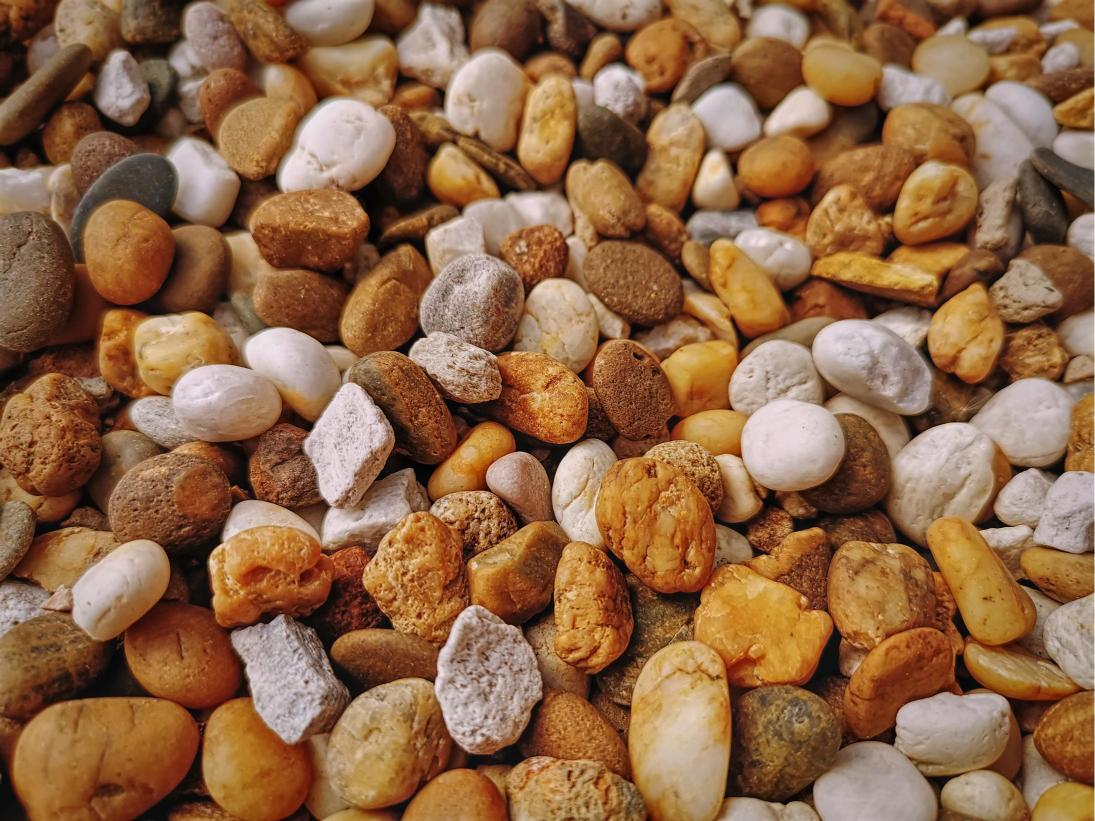
- River Pebbles: River pebbles are found in riverbeds and streams. They are usually shinier and smoother due to the continuous flow of water. These types of pebbles are a branch of natural pebbles.
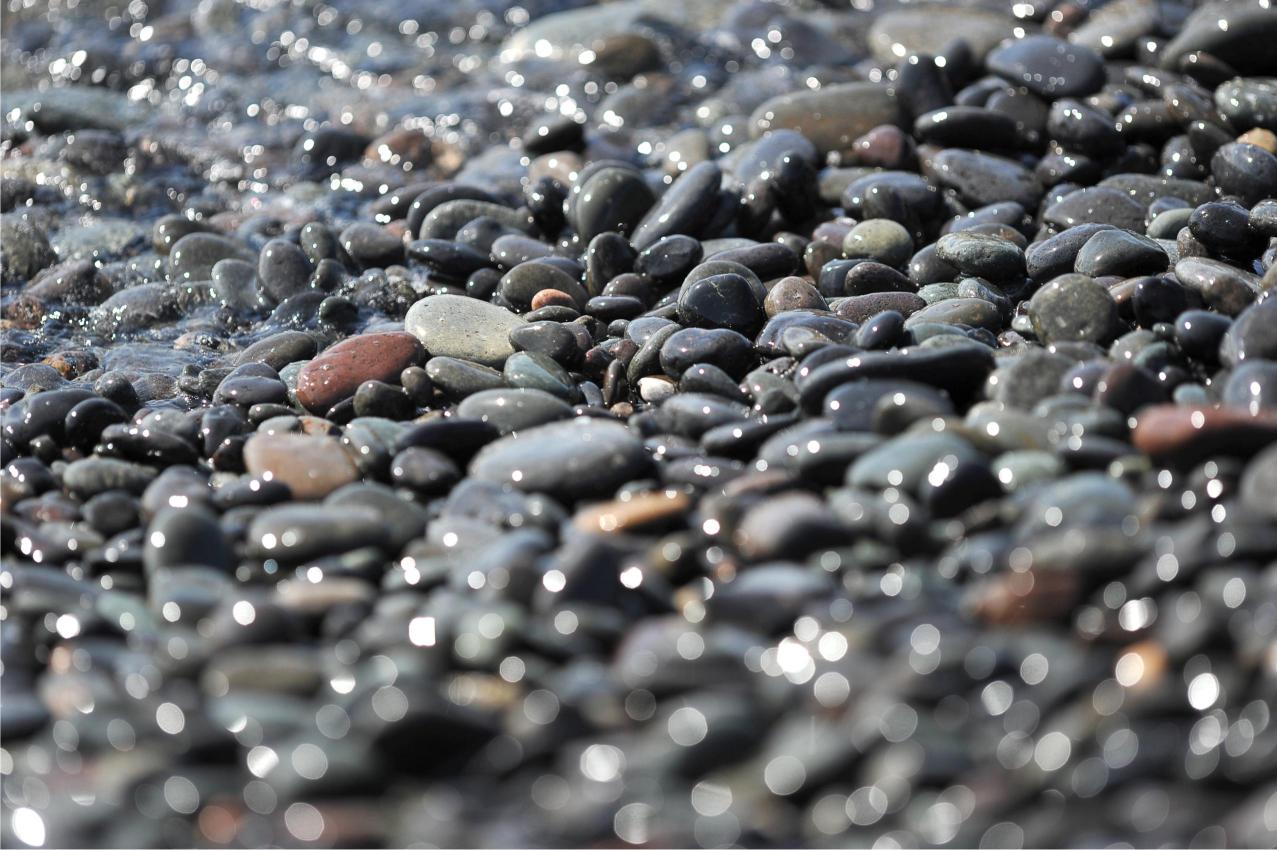
- Beach Pebbles: These pebbles are formed on seashores and have varied shapes like round, oval and flat. Due to different movements of waves, some pebbles have rough textures while some have smooth.
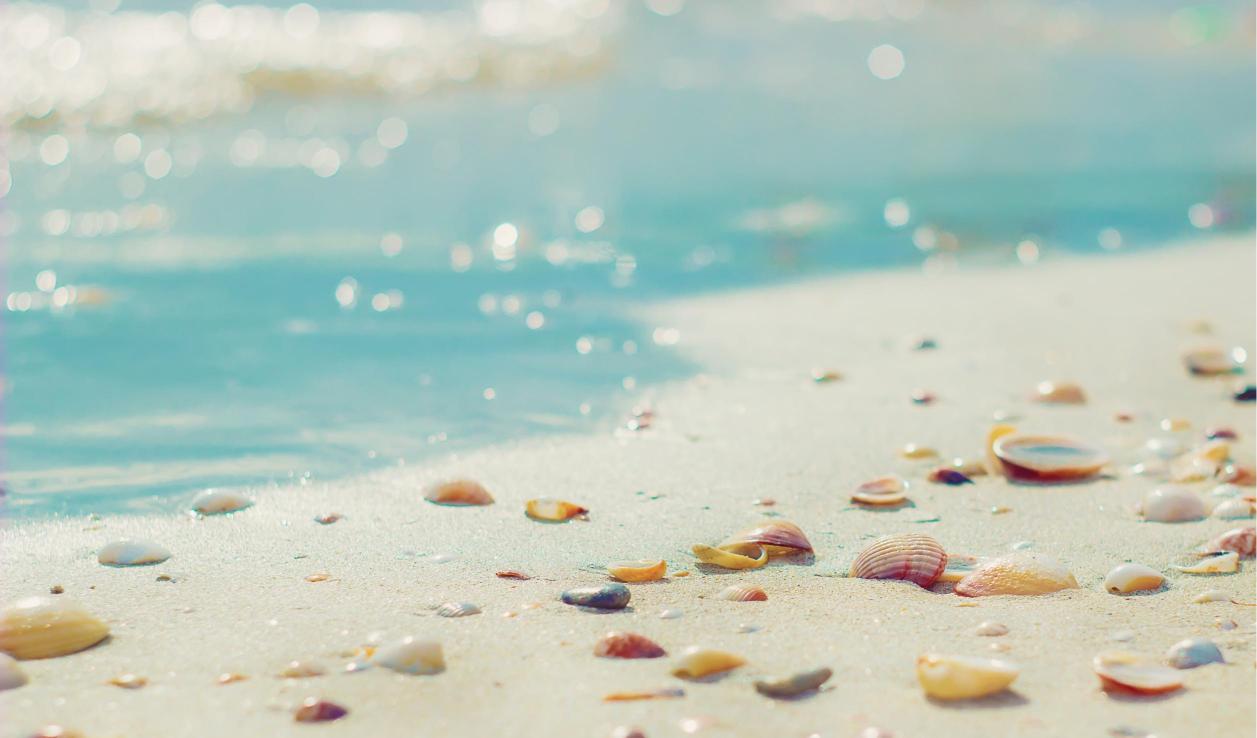
- Mexican Pebbles: These are found on the beaches of Baja California in Mexico. They are smoother in nature and rounder in shape. As they have a smooth texture with a matte finish, they are predominantly used in the decor industry.
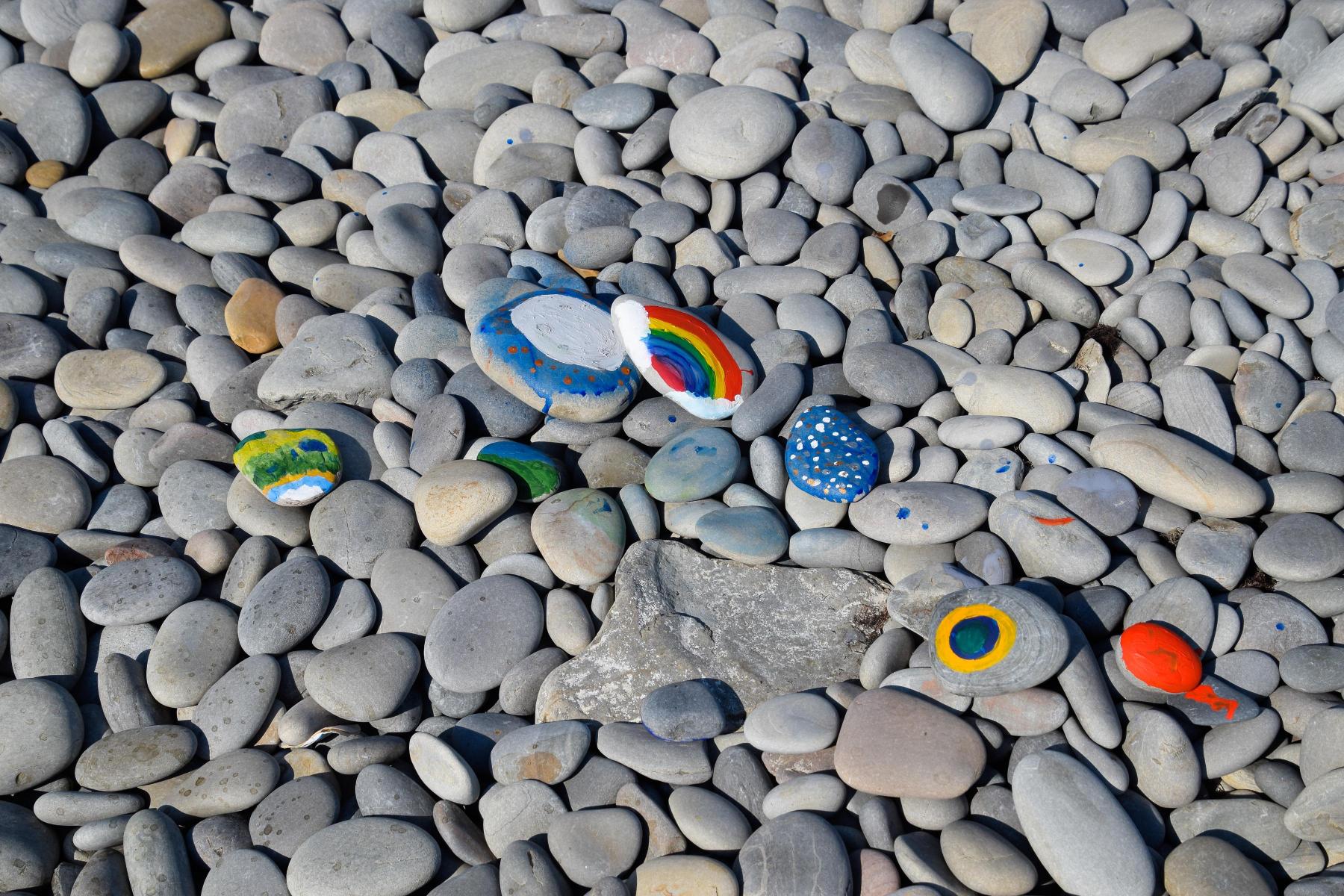
- Polished pebbles: Natural pebbles undergo a mechanical process known as the 'tumbling process' to form polished pebbles. Coarser grits, finer grits and the finest grits, sometimes combined with polishing compounds, are used to polish the pebbles to give more shine.
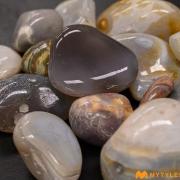
- Coloured Pebbles: These pebbles are specifically coated with dyes or pigments from vibrant to neutral to earthy tones. As some dyes may be environmentally harmful, you can carefully choose coloured pebbles, which are made with eco-friendly pigments.
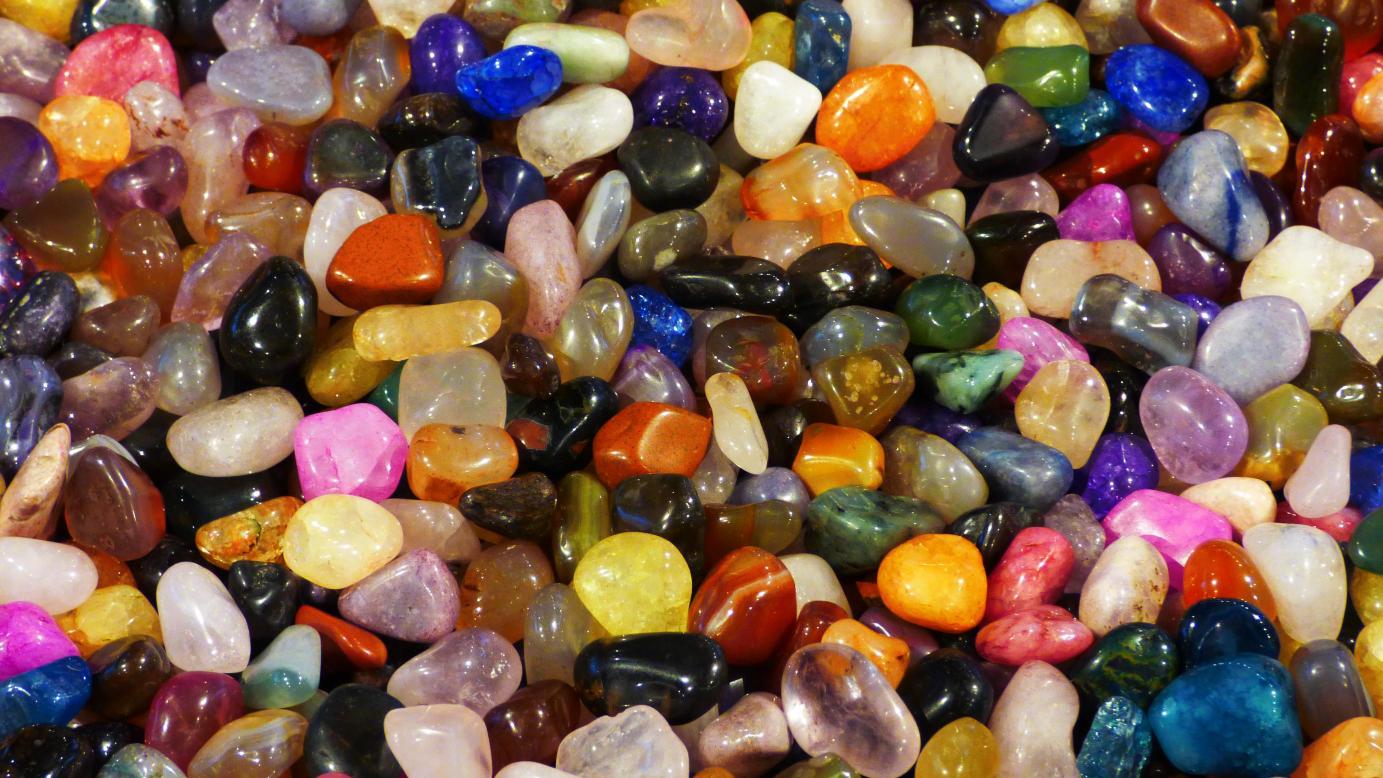
- Quartz Pebbles: Quartz is known for its durability and scratch resistance. Quartz pebbles are usually present in a milky white colour but are available in multiple shades like rose pink, smoke grey, amethyst purple and yellow due to impurities.
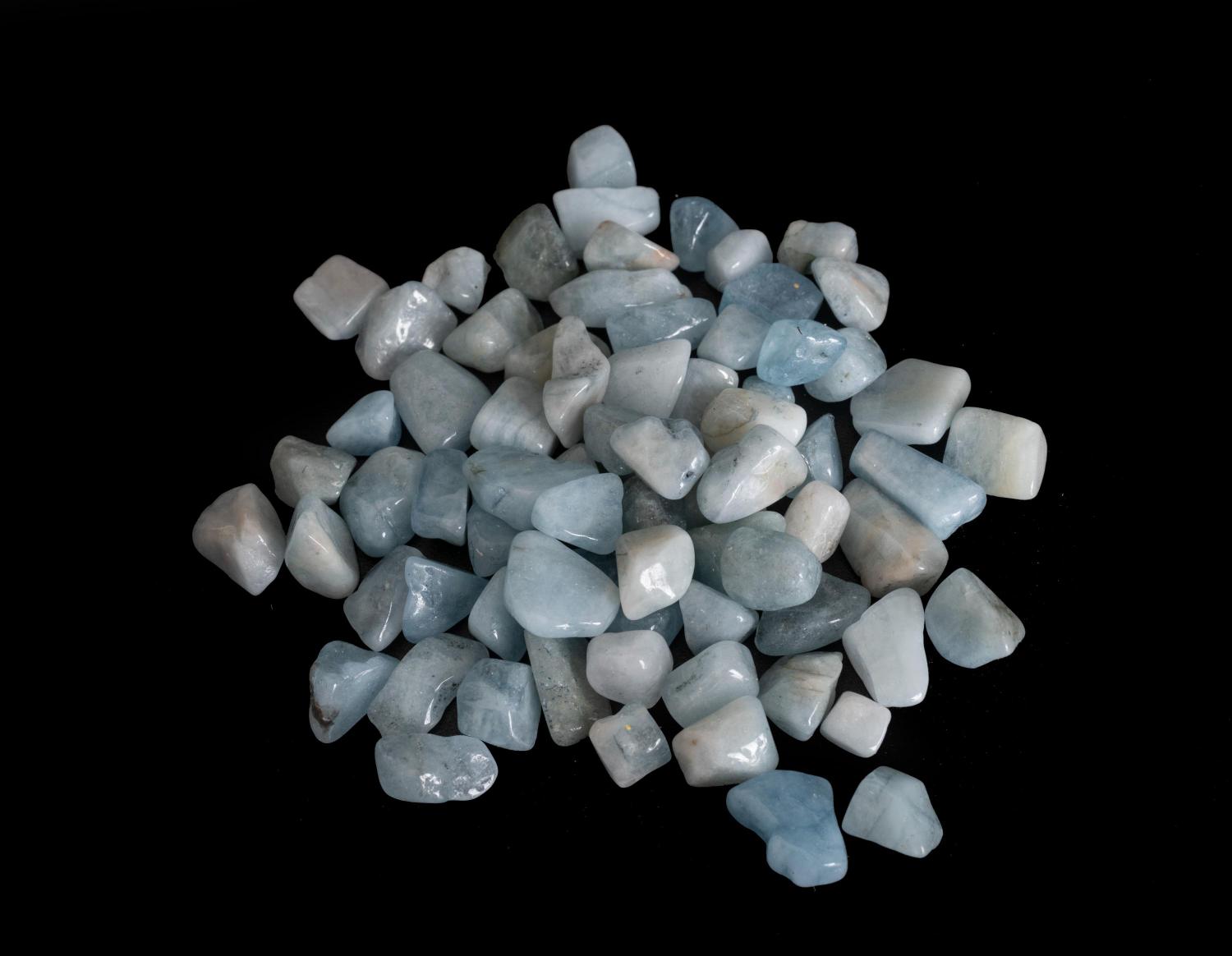
Factors to Consider While Choosing Pebbles for Decor
There are trendy design inspirations for home decor on social media, which made people ask, "What is a pebble?" But before making impulsive purchases, there are many factors, like size, shape, colour, texture, theme, lighting and location, to consider for pebble decoration. Here are some tips to choose the right pebbles and avoid incompatibility.
- Overall Theme: Focus on the theme of your space, whether it is modern, rustic, minimalist, boho, coastal or fusion. Choose pebbles that complement your theme to create a cohesive environment. For example, polished and sleek pebbles for a modern theme, and natural, unpolished pebbles for a rustic theme and smooth and round pebbles for a coastal theme.
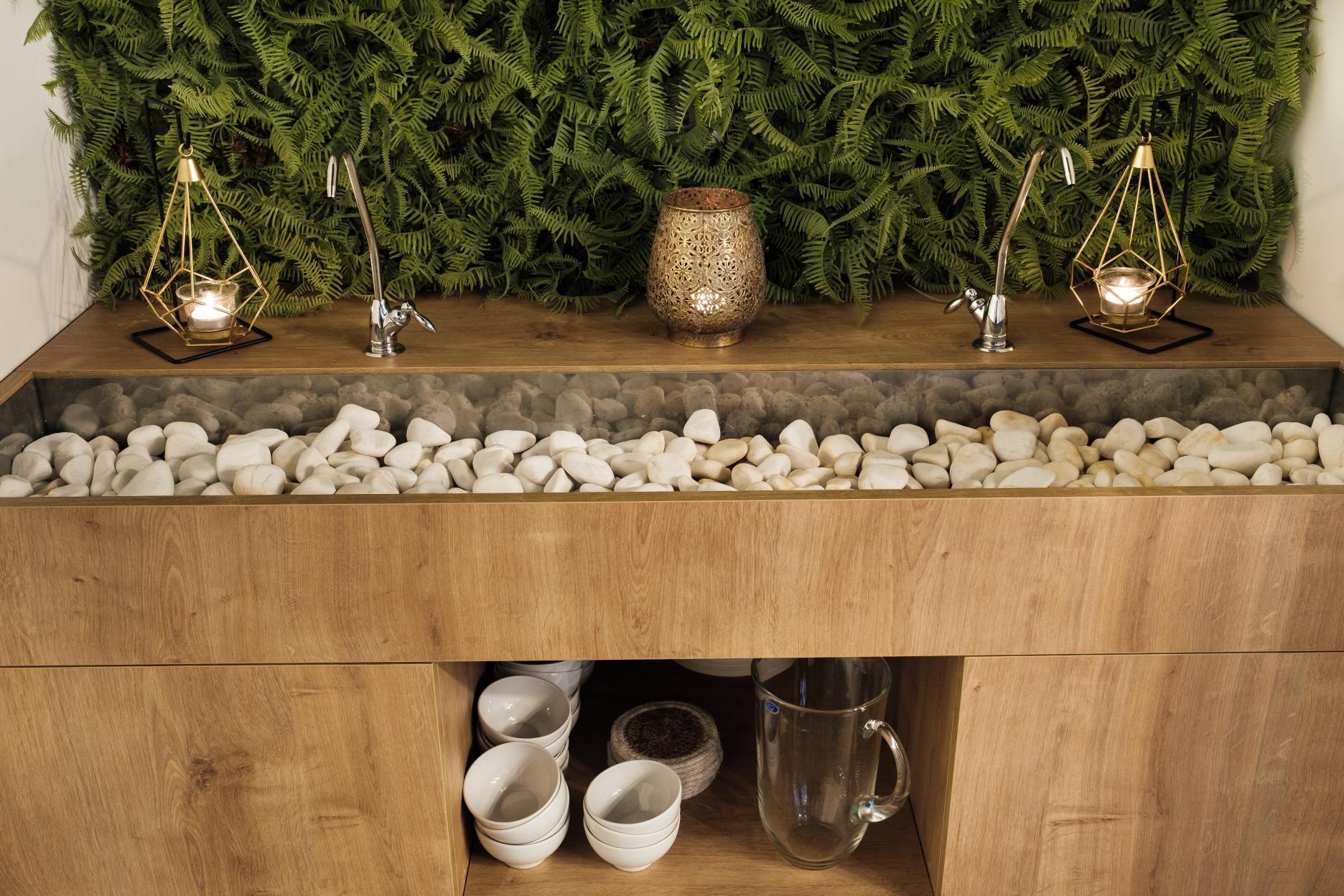
- Colour Palette: Consider the existing colours in the chosen space. You can either complement or contrast with the colour palette. For example, if you have beige and brown in your existing palette, consider using pebbles in soft sky blue, olive, muted teal, muted denim blue, creamy white or off-white to complement the palette.
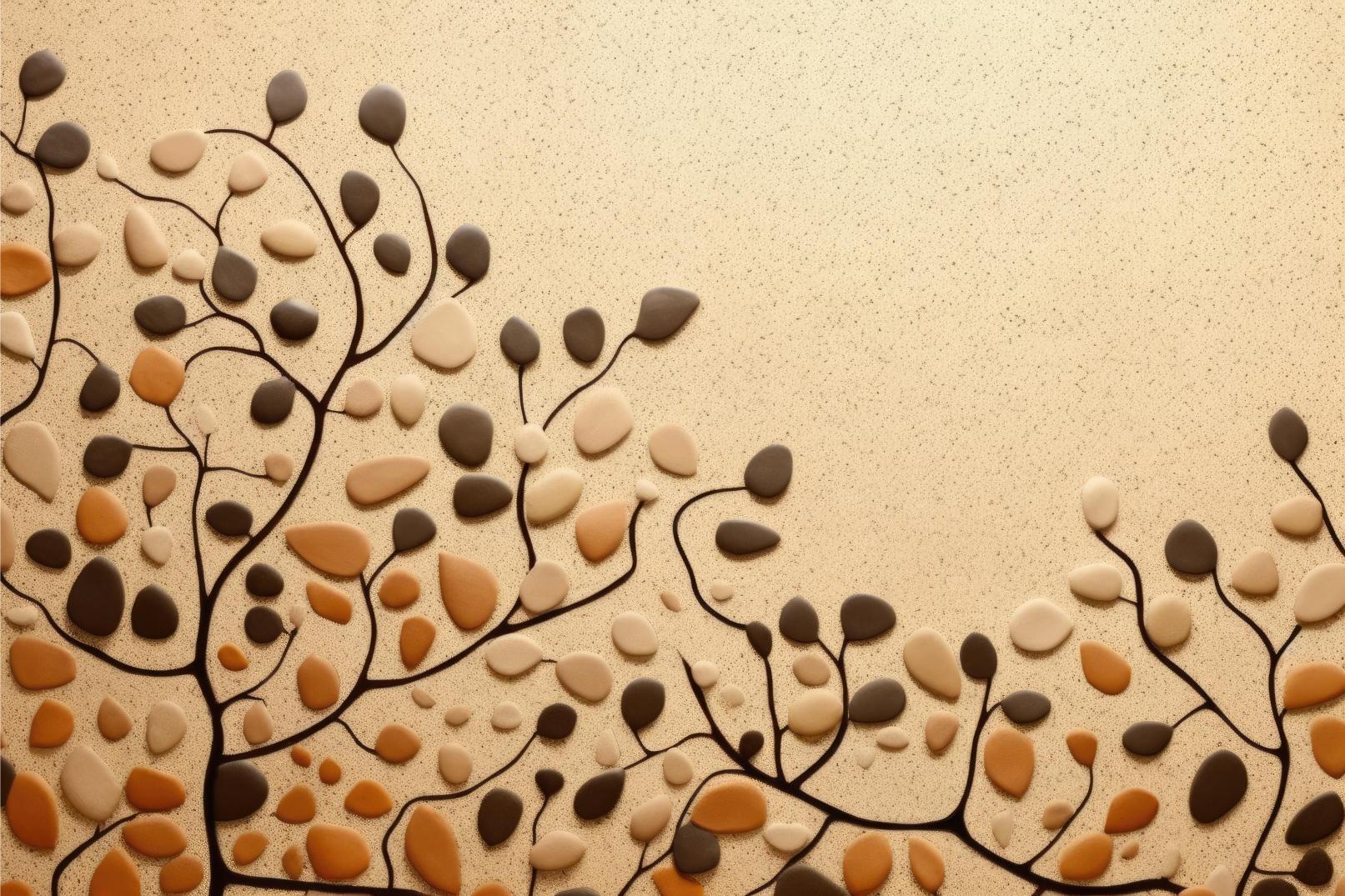
- Size: Choose the size in relation to the purpose and size of your entire space. Consider choosing small pebbles with under 1 inch for filling gaps and creating intricate patterns. You can use medium-sized pebbles from 1 to 3 inches for pathways, borders, water features and indoor decor. You can use large pebbles over 3 inches to create a bold statement in gardens, water features, and indoor spaces.
- Shape: Consider selecting shapes from round to irregular to create the desired look in your space. Smooth, round pebbles are ideal for creating a spa-like atmosphere. Oval pebbles create more dynamic appeal to the space. Flat pebbles make excellent pathways, stepping stones, and wall cladding. At last, irregular pebbles create a natural and rustic look to the space.
- Texture: Consider the overall style, mood, and functionality while choosing the texture. Pebbles with a glossy finish are suitable for modern and elegant spaces with a luxurious touch. Pebbles with rugged surfaces exude a rustic and organic feel. You can also combine pebbles with different textures to add visual interest and depth to your design.
- Lighting: If you want to amp up your decor further, consider choosing artificial lights. Incandescent lights cast warm tones in your pebbles, creating a cosy and inviting atmosphere. Fluorescent light creates a cooler and more muted effect on your pebbles. Warm LED lights have a similar effect to incandescent; cool LEDs are close to fluorescent.
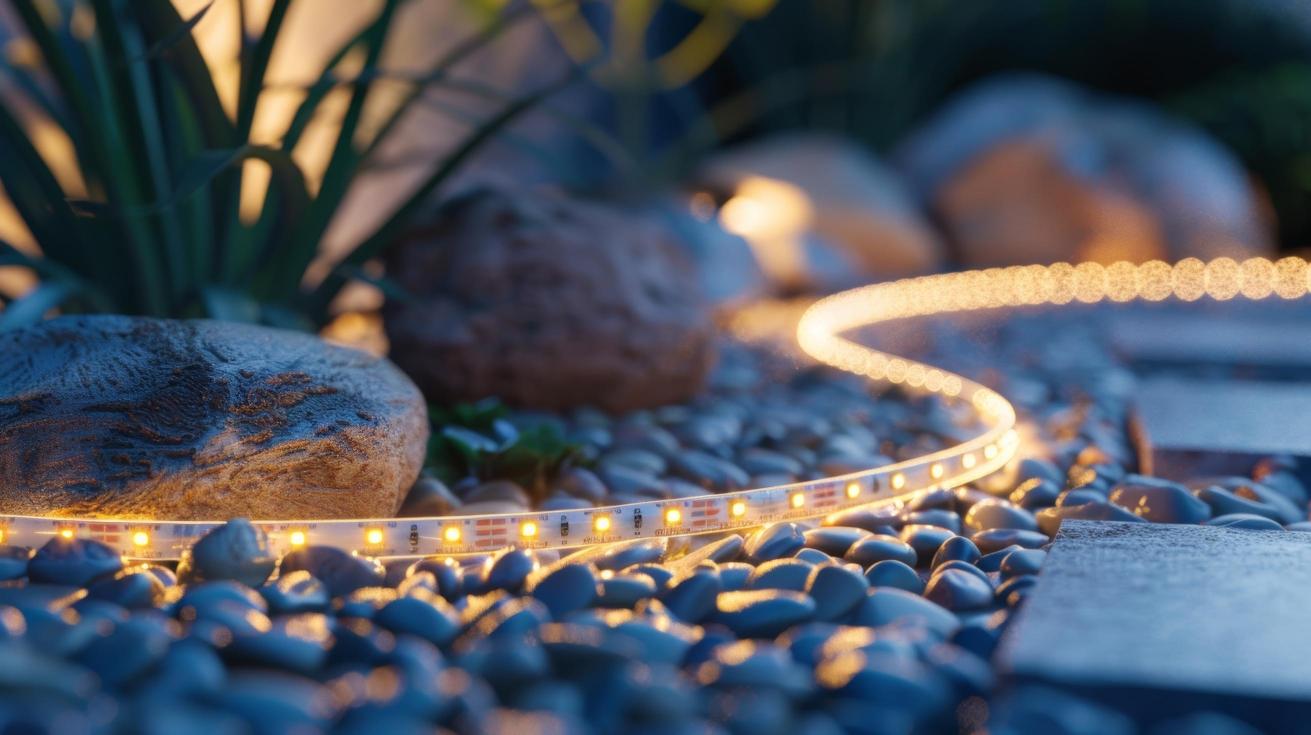
- Location: Choose pebbles with the right size, shape and texture in relation to the location you choose to place them. For example, consider selecting pebbles with a polished finish for indoor decor, large pebbles with a rugged texture for outdoor spaces, and pebbles with a smooth and matte finish for pathways.
Coloured Stones to Decorating Your Indoors
Coloured pebbles offer a pile of ideas to enhance your interior design from accent walls to potted plants. MyTyles recommends a few ideas that can adorn your indoor decors. The following design recommendations will help you expand your idea collection.
- Accent walls: Use flat-backed coloured stones to create a stunning design on your wall. Consider using adhesives to paste the pebbles to your wall. The following image will give you clarity about how different shapes and sizes of pebbles add a versatile look to the wall.
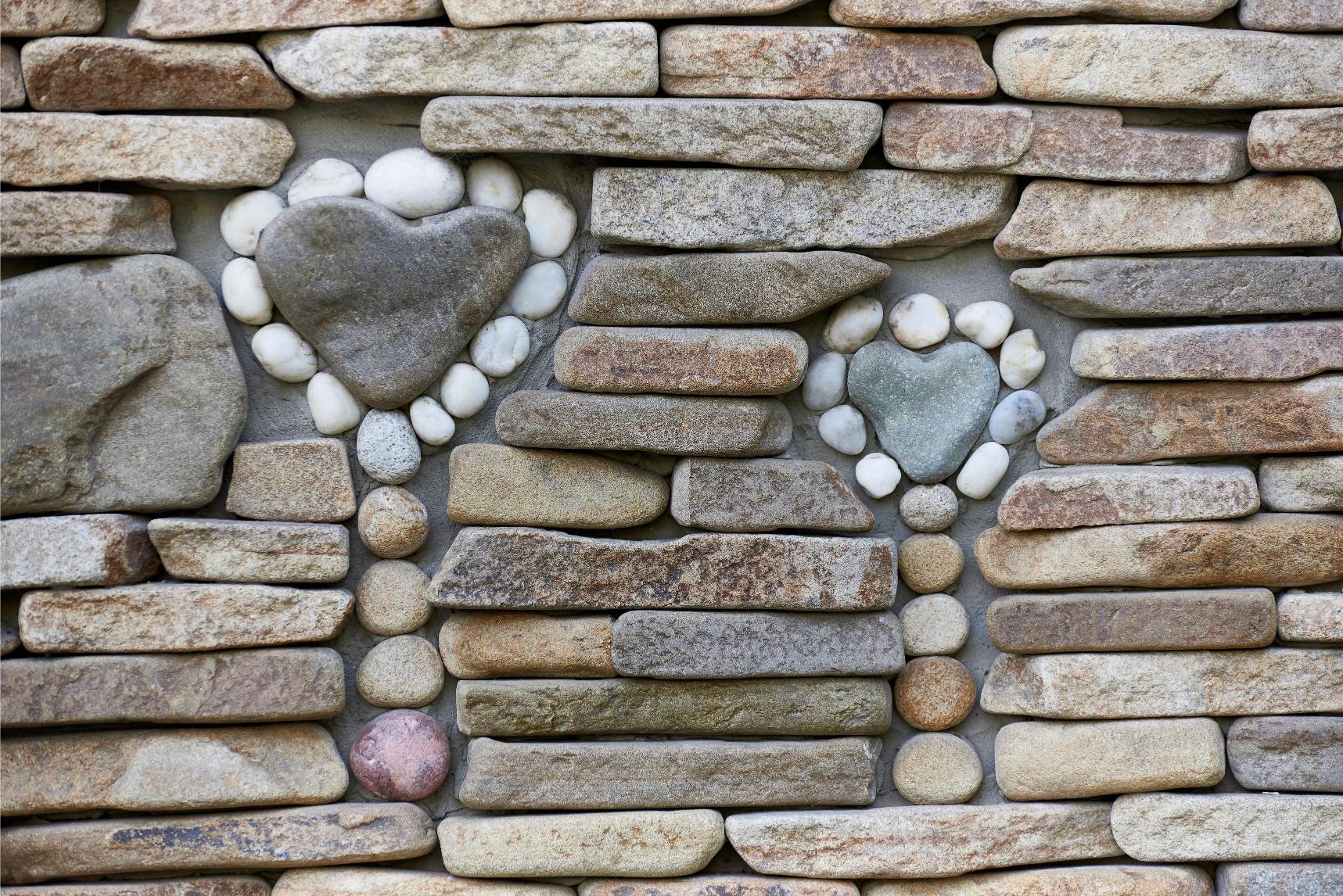
- Fireplace Surrounds: Use larger, flat stones with smooth to rough textures around your fireplace according to your preferences. You can also add smaller stones to create a mosaic effect. Arrange the pebbles in whichever way you want, like one in the image or a geometric pattern or a word or a single border around the hearth.
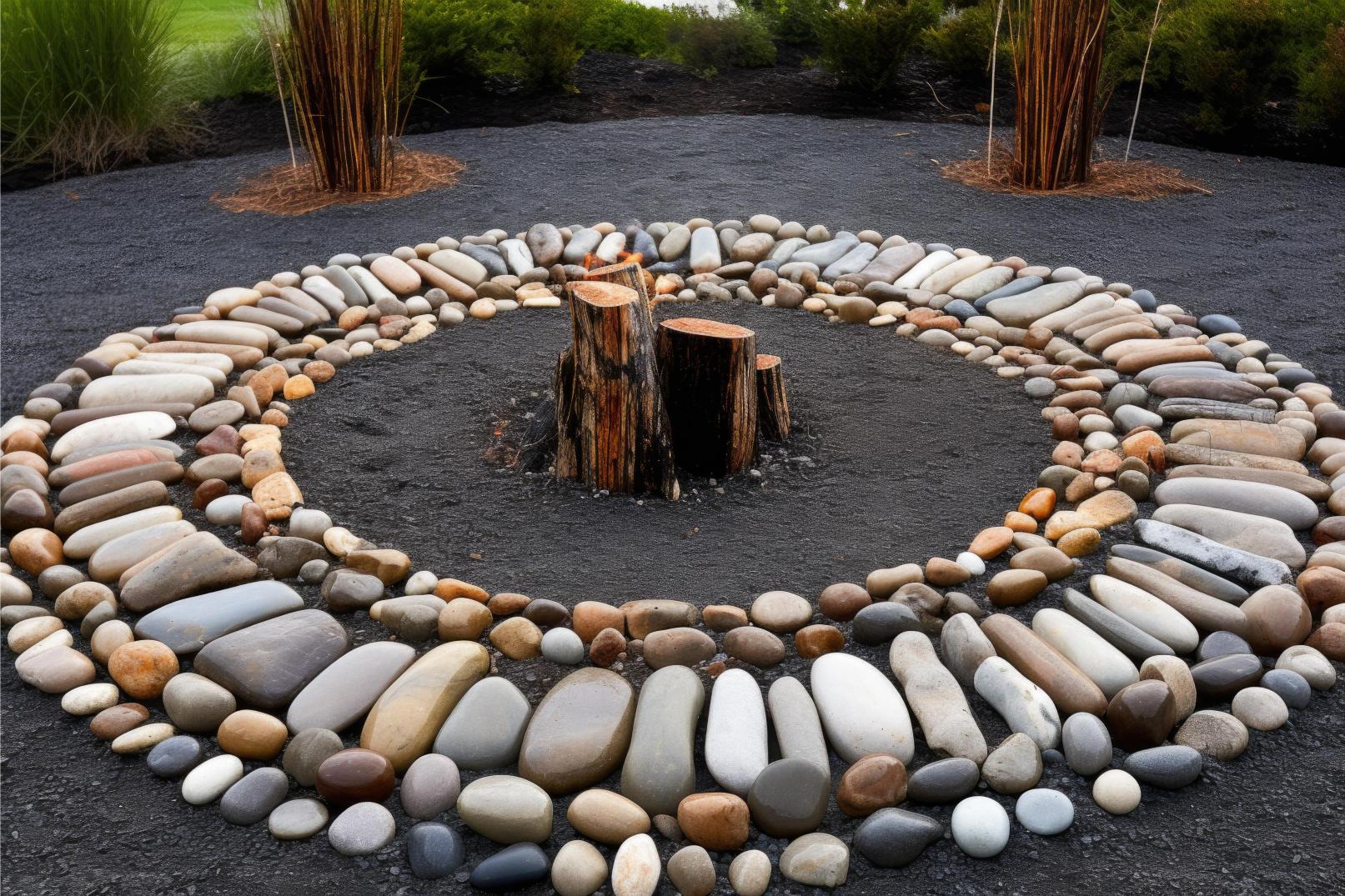
- Bathrooms: Adding pebbles in the bathroom decor remains a popular choice. You can incorporate coloured stones for decorating your bathroom by using them as a border around the mirror, as a decorative element in the shower niche, as part of the flooring around the bathtub, or as an accent wall.
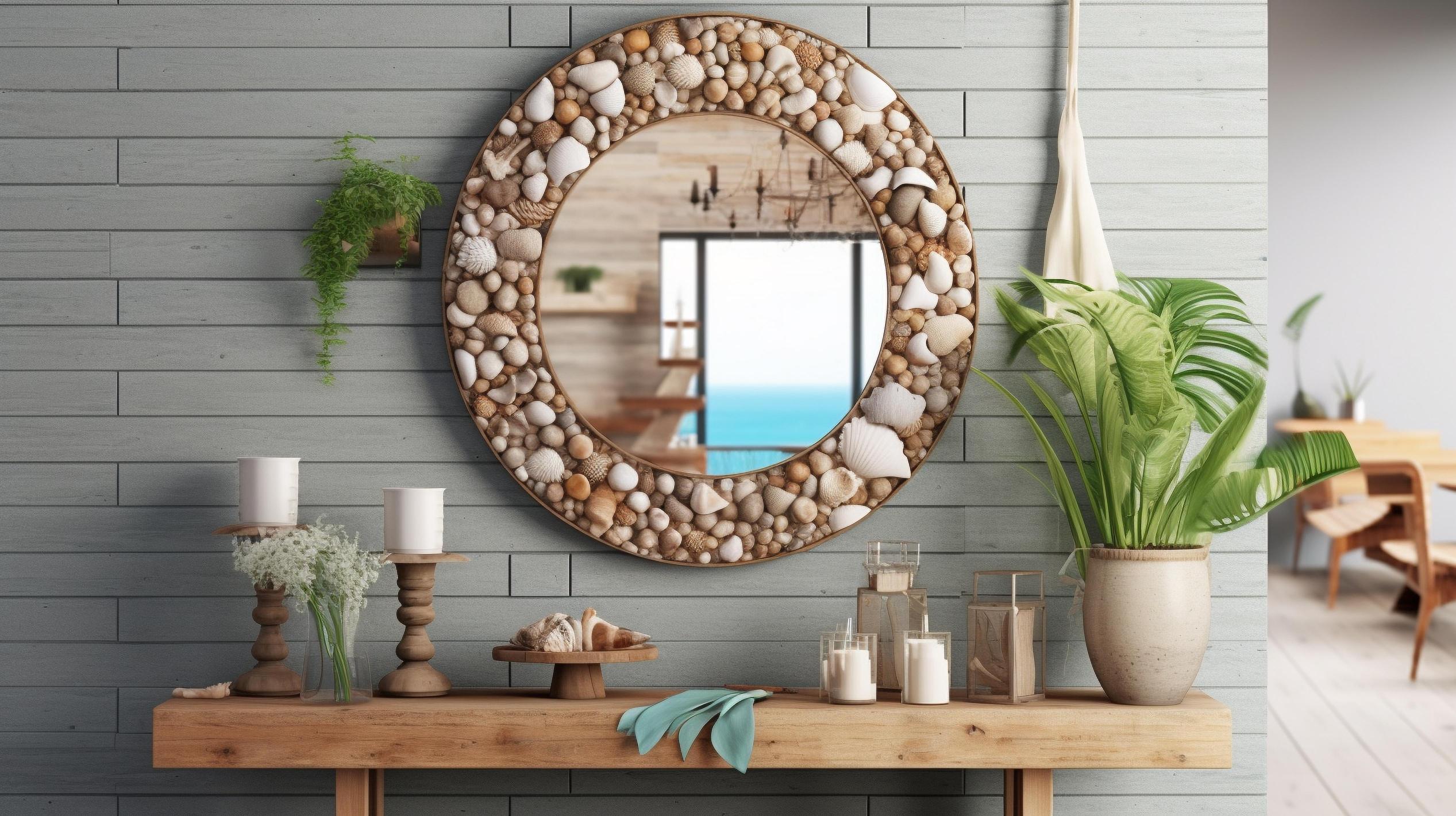
- Terrariums: Terrariums help to add a unique character to the space. Use coloured pebbles to create layers and visual appeal in your terrariums. It can also act as a base for your plants. Leverage the multiple colours, textures and sizes. You can choose the one design that captures the mood you want to create.
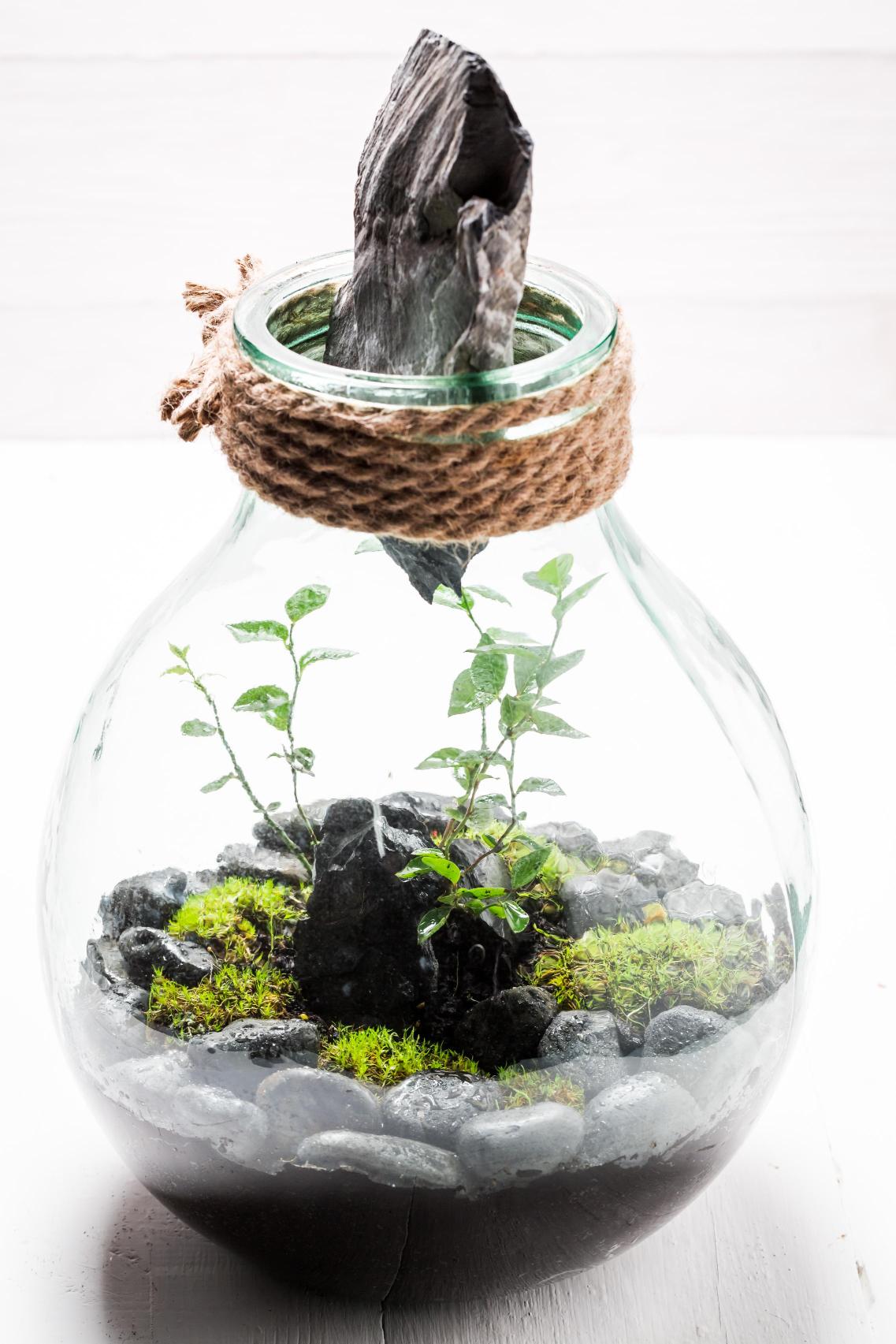
- Aquarium: Use aquarium-safe coloured stones for decorating your aquascape, as some can have harsh chemicals that affect the organisms. Combine the pebbles with driftwood, plants, and other decorations to create an appealing and playful environment for your aquariums.
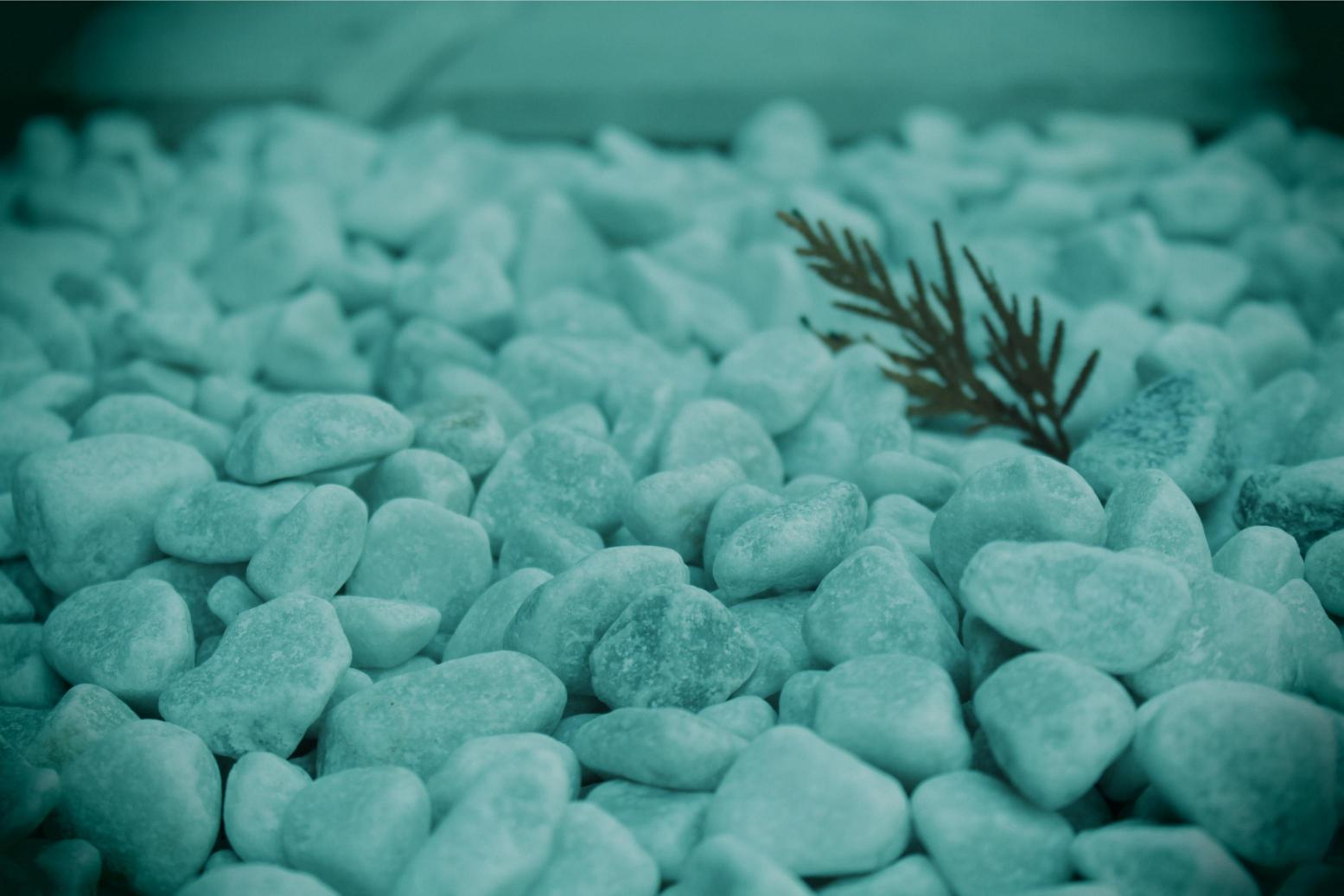
- Clay Toppers for pots: Create an artistic topper for your pots by glueing coloured stones to a flat piece of clay. You can also paint them with mandalas or create a stunning art piece beside the stones to impart the artistry to the pots. This can add a creative and unique touch to your indoor garden.
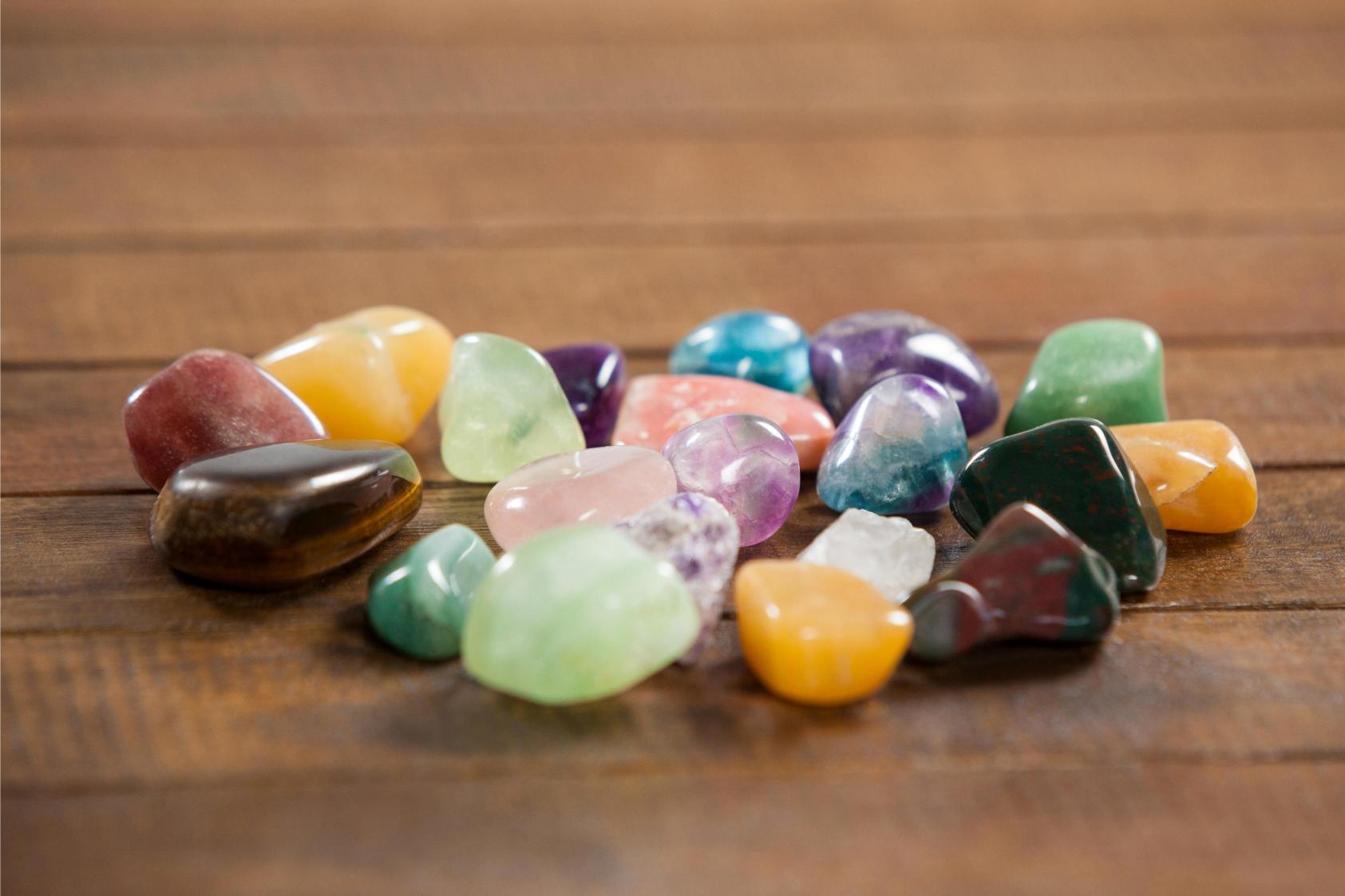
- Succulents and Potted Plants: Coloured stones for potted plants and succulents create a creative touch to your indoor garden. Use coloured stones on the top of your succulents and potted plants. This can help retain moisture, prevent soil from splashing, and add both earth and a vibrant touch.
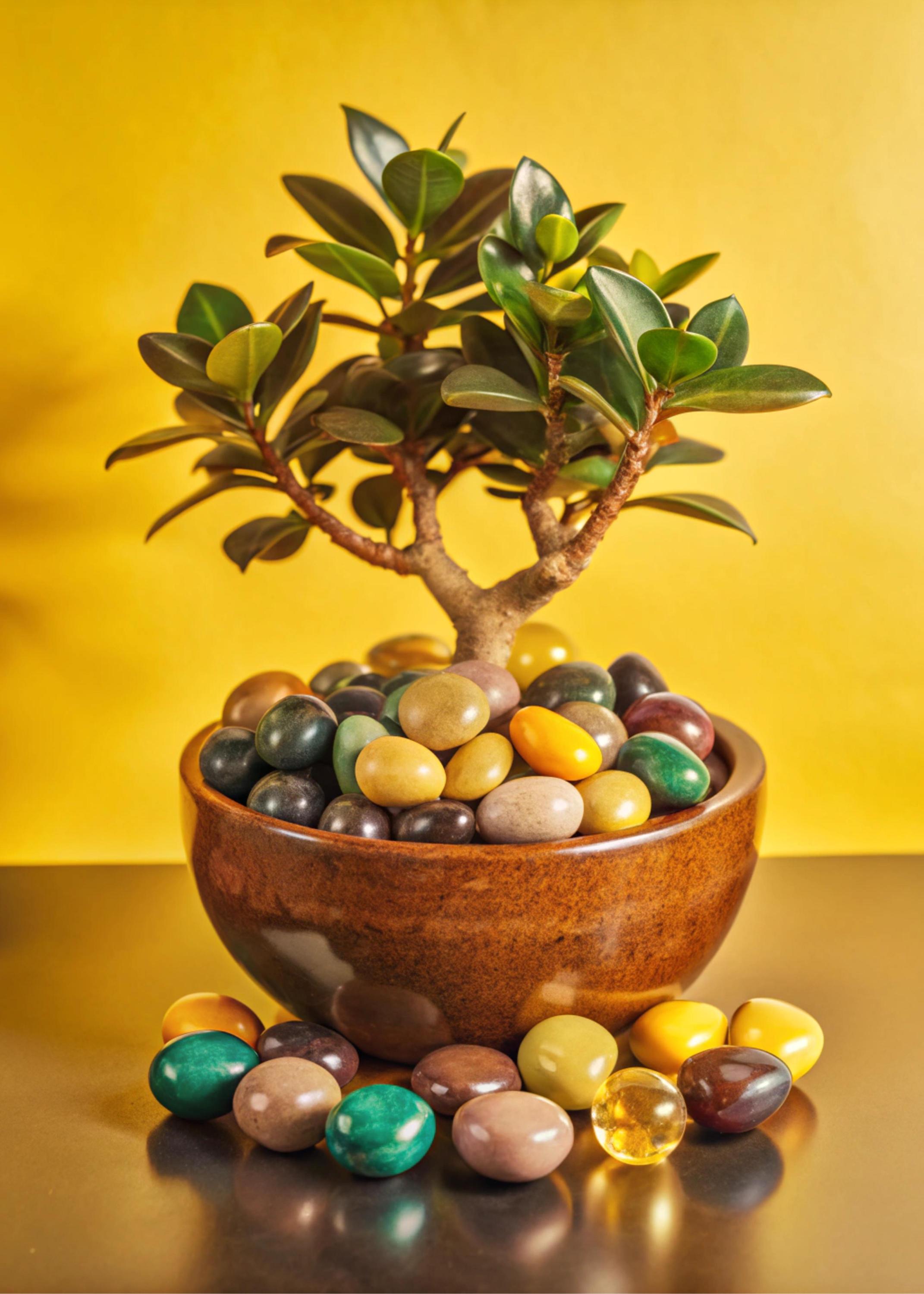
Colourful Ideas for Gardens and Outdoors with Pebbles
Pebbles offer a lot of opportunities to elevate the outdoor design effortlessly. Explore the following ideas to get
- Garden groundcover: Create an attractive and calming groundcover by mixing colourful pebbles for your garden. Arrange them in any pattern for a dynamic look or create a mosaic-like pattern. For example, create an ombre look with a colour transition. The following image may kindle your ideas.
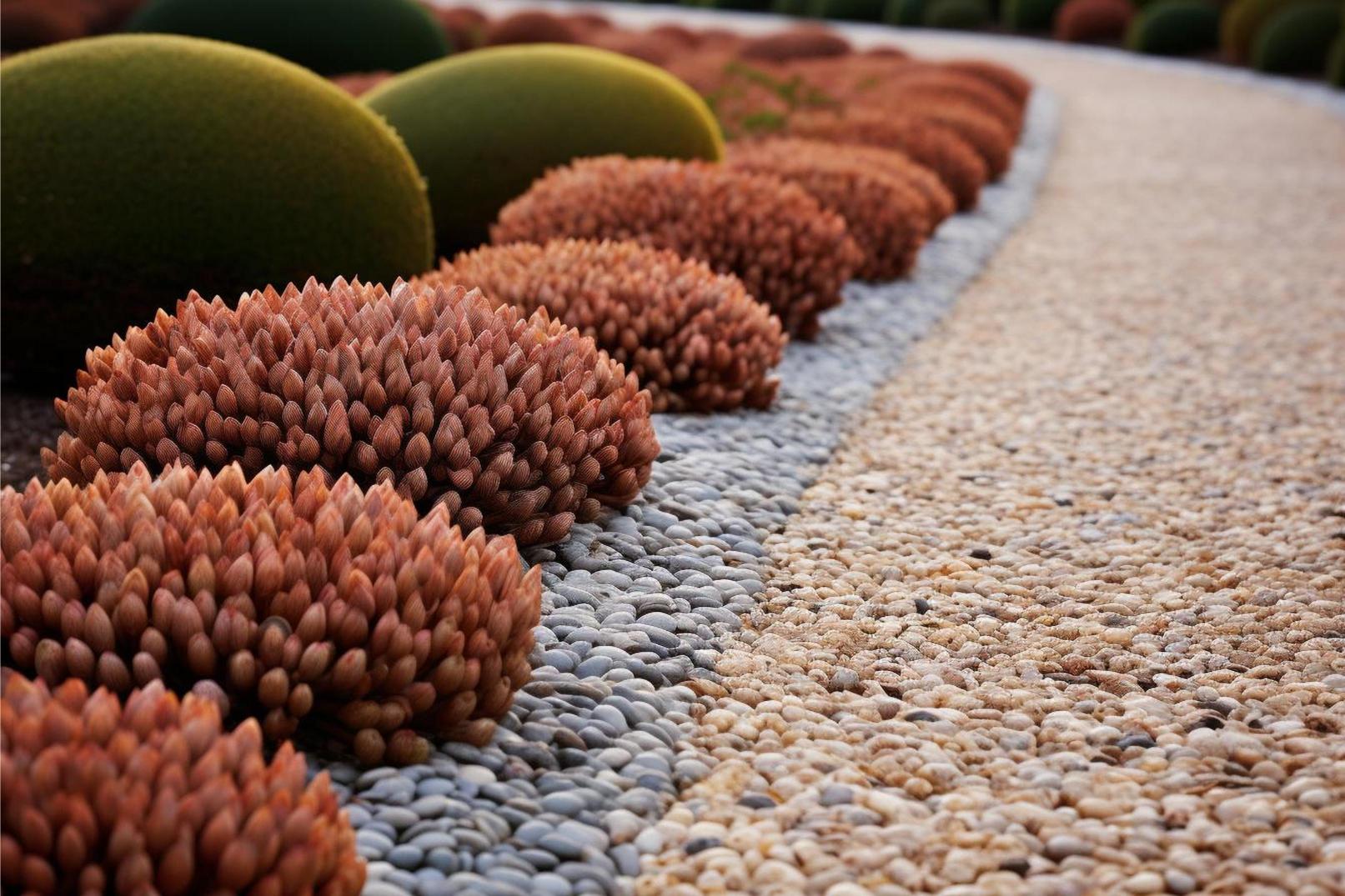
- Yard Art: Use colourful pebbles to depict florals, animals, geometric patterns, or abstract designs. You can stack them to form towers, create pebble-covered animals, or even build miniature landscapes. As you are using your own vision to create the designs, your outdoor decor will truly resemble you, creating stunning personalised decor.
- Pathways: You can arrange them in stripes, swirls, or any pattern you love. You can also use those pebbles as a decorative border for the tiles. If you are unsure about choosing tiles for your garden and patio, you can check out our blog on How to Choose the Best Tiles for Garden Walkways and Patios.
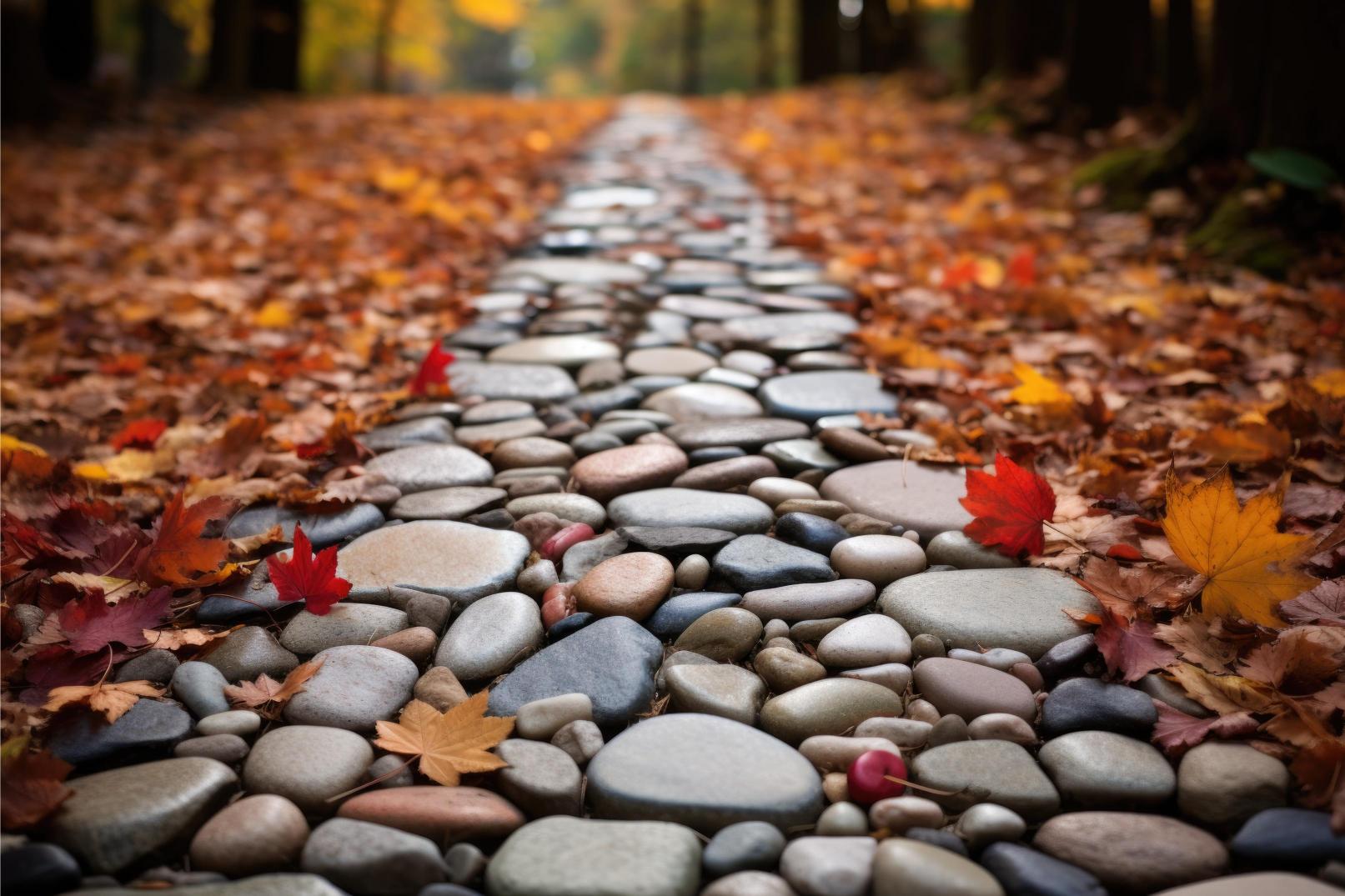
- Driveways and Patios: Decorate the edges of your driveway or patio with a colourful pebble border. Instill creativity in the space where you breathe fresh air, relax and unwind by using distinct geometric patterns, initials, or even small scenes. It helps to add unique character to your outdoors.
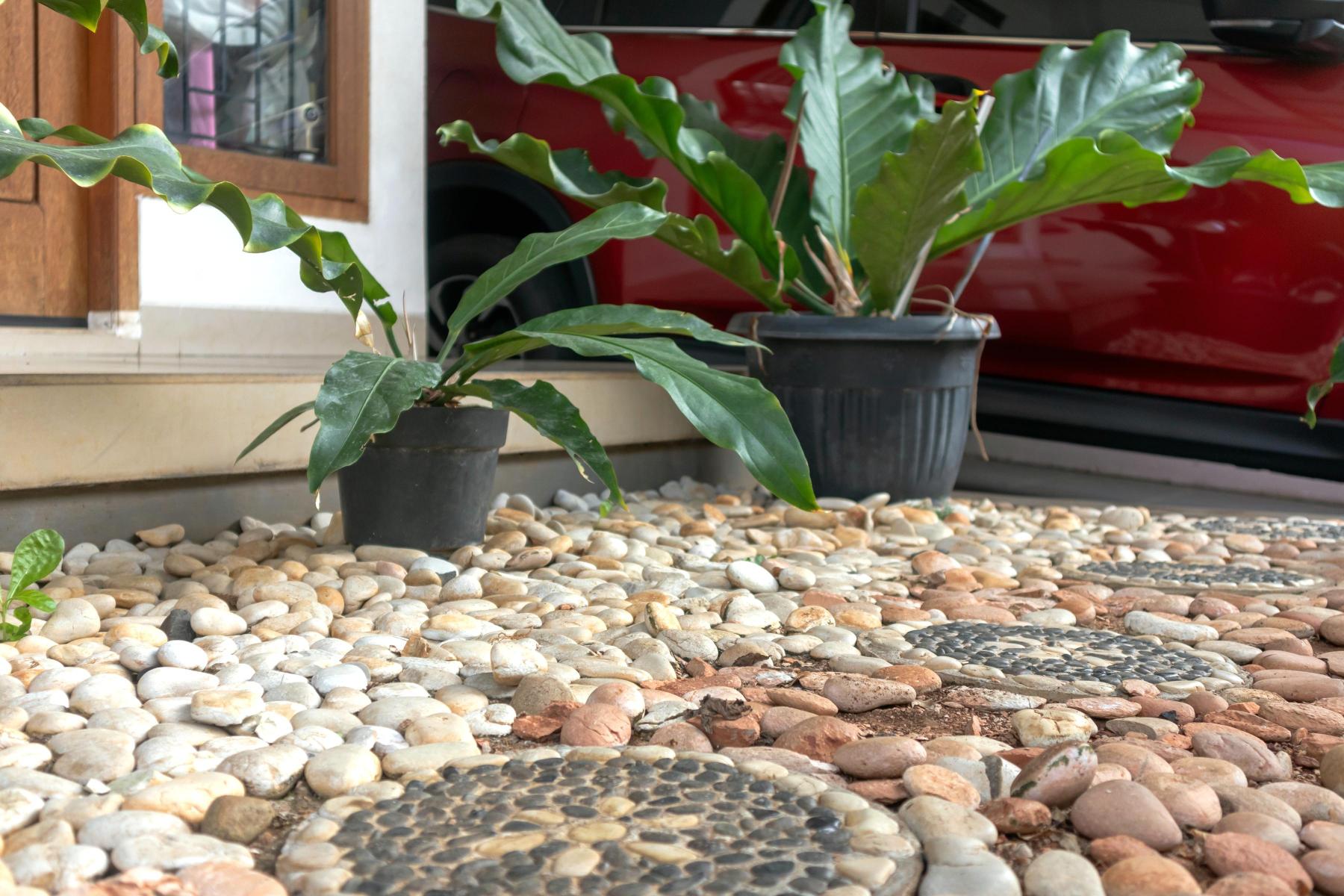
- Artificial ponds: Create a decorative border using pebbles to create an organic aesthetic around your pond. Use shades of blue, green, and white to bring the coastal energy to your space. You can add larger rocks and aquatic plants for a more realistic effect. Prioritize safety while choosing pebbles for ponds and maintain regular cleaning.
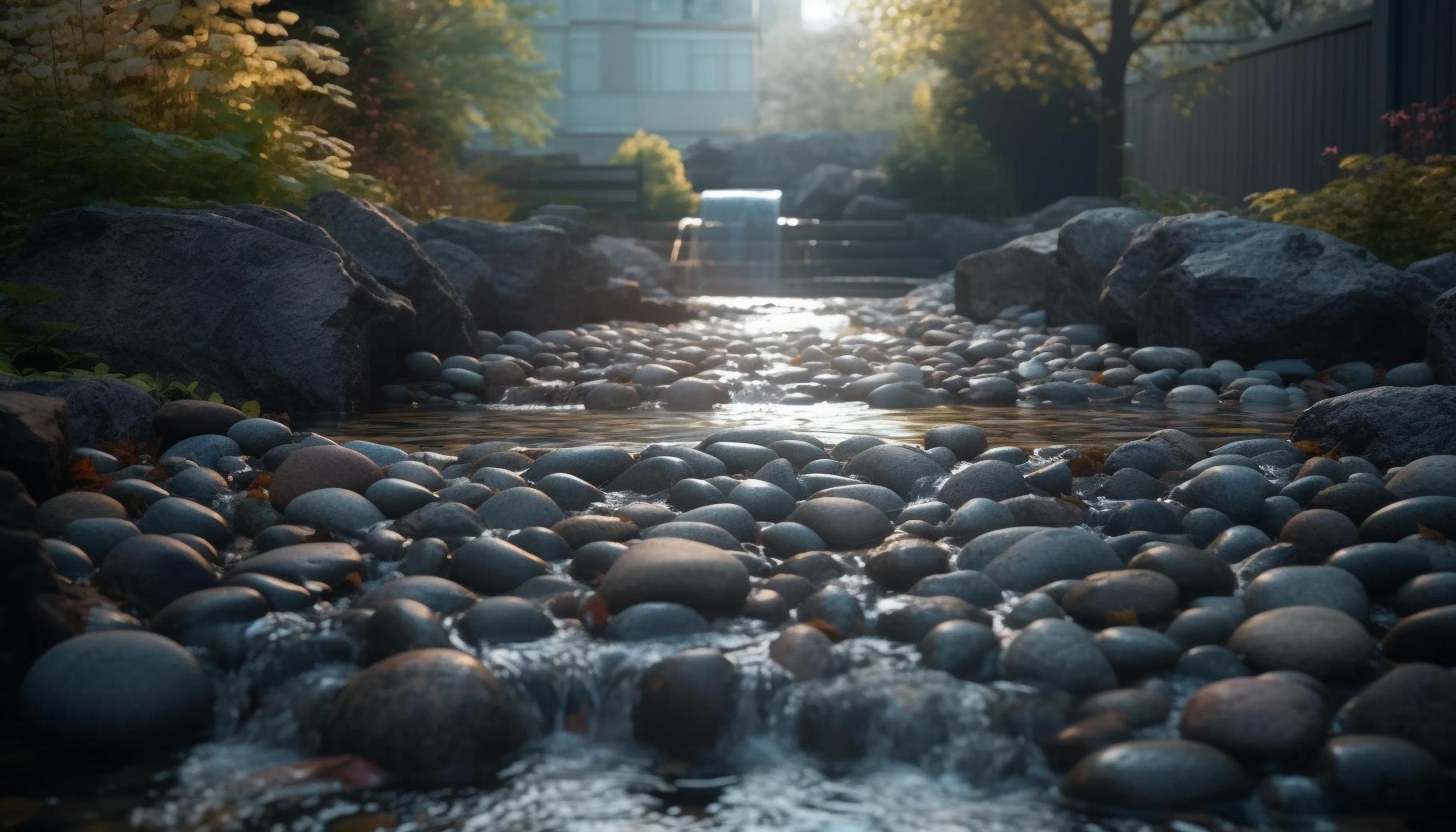
DIY Ideas for Pebble Decoration
If you're still looking for unique ways to decorate your indoor and outdoor spaces, MyTyles recommends these creative DIY ideas to create stunning artistic spaces. However, these are just to kindle your imagination. You can transcend your creative boundary and do a lot more experiments with pebbles.
- Pebbles with Messages: Find smooth and flat pebbles and write inspirational, motivational or memorable phrases on them using paint pens or permanent markers or metallic paints. You can place these pebbles with messages in your garden or in your living room or bedroom.
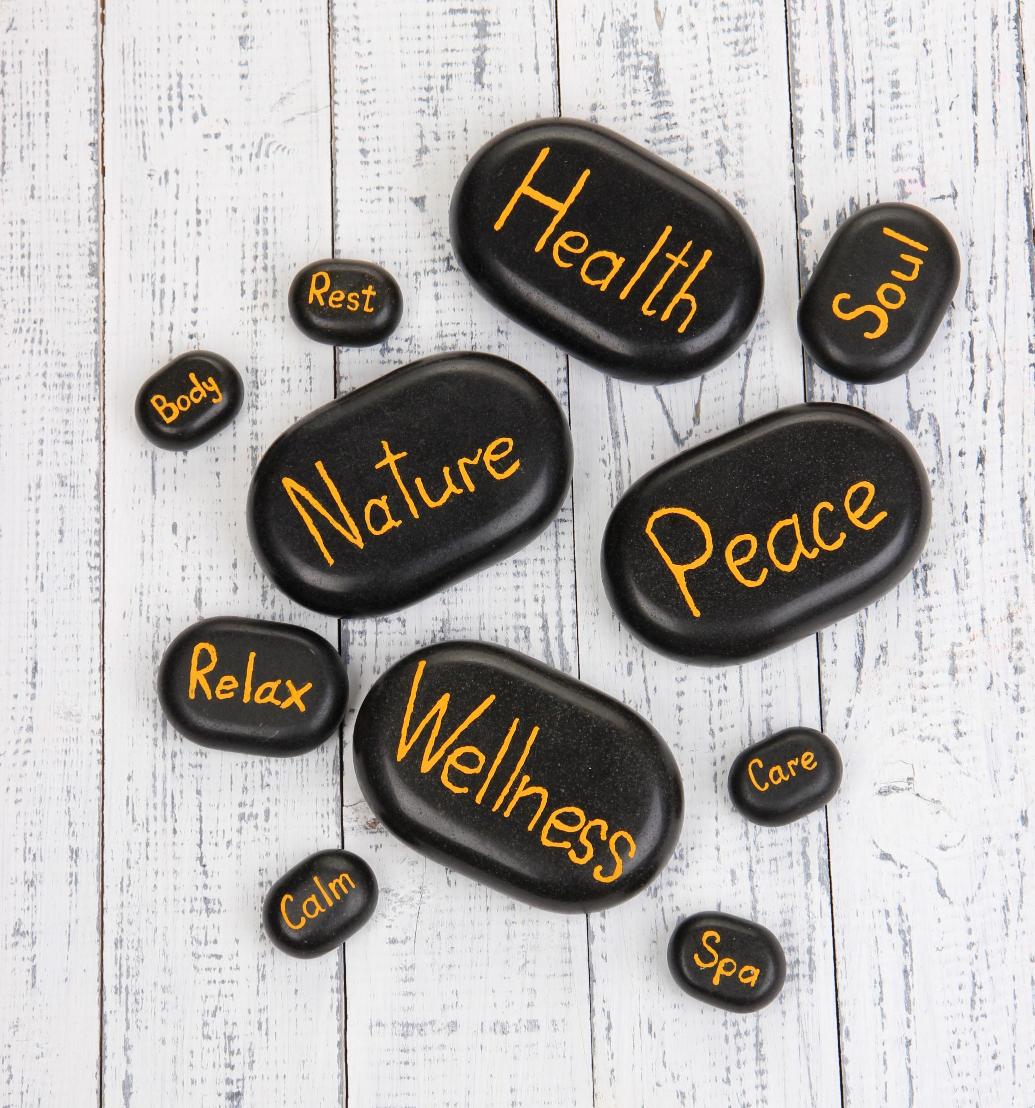
- Floating Candle Bowl: Find a shallow, wide bowl and fill it with smooth or glossy pebbles to act as a beautiful base for the candles. Add water until it almost reaches the top of the pebbles. Place tealight candles to float on the water's surface. You can use any colour according to your preference.
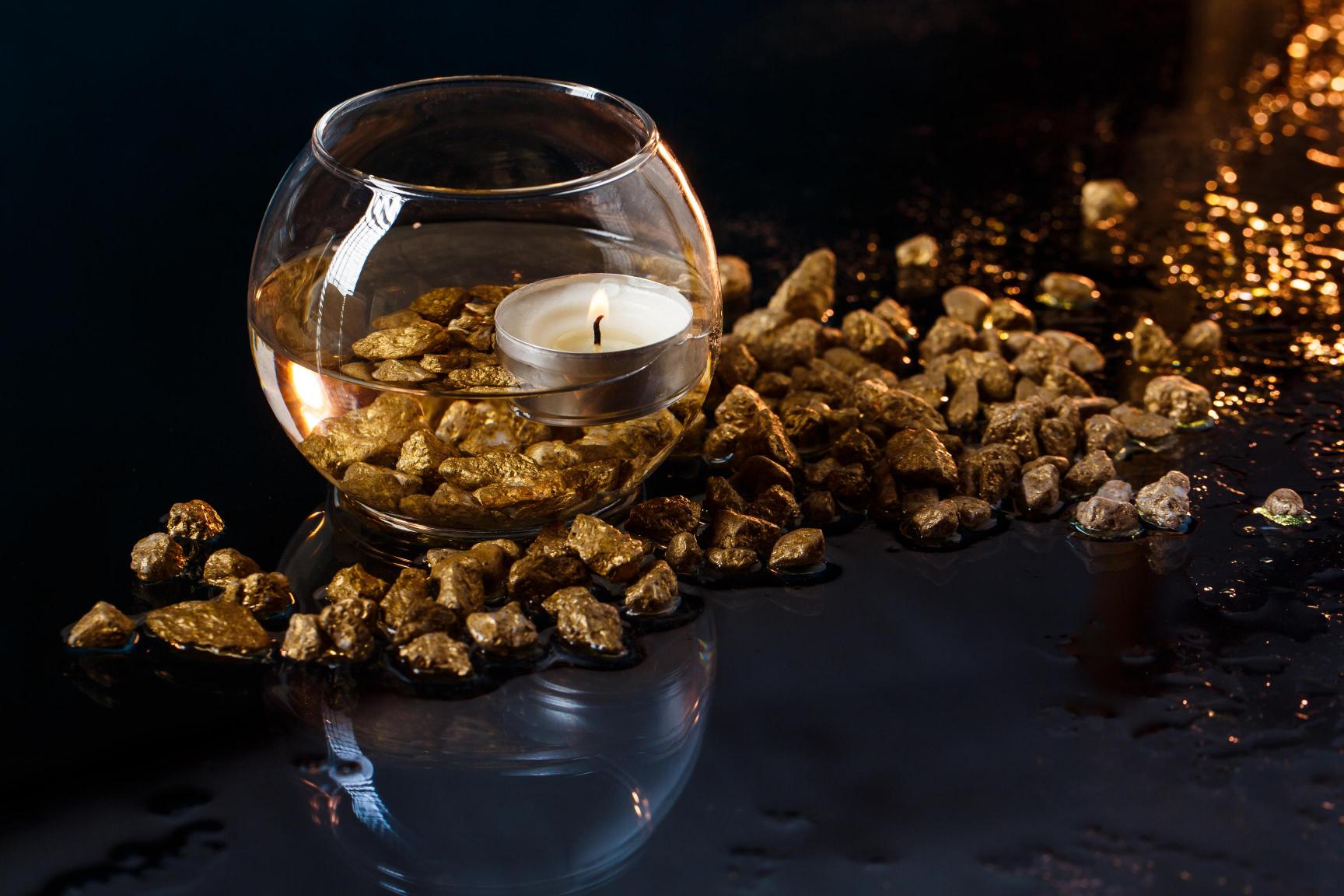
- Terracotta Tray: Use a shallow terracotta tray and fill it with pebbles. Place pillar candles in the midst of the pebbles to create a divine and serene atmosphere in your space. This idea is simple yet creates a spa-like healing atmosphere in your space.
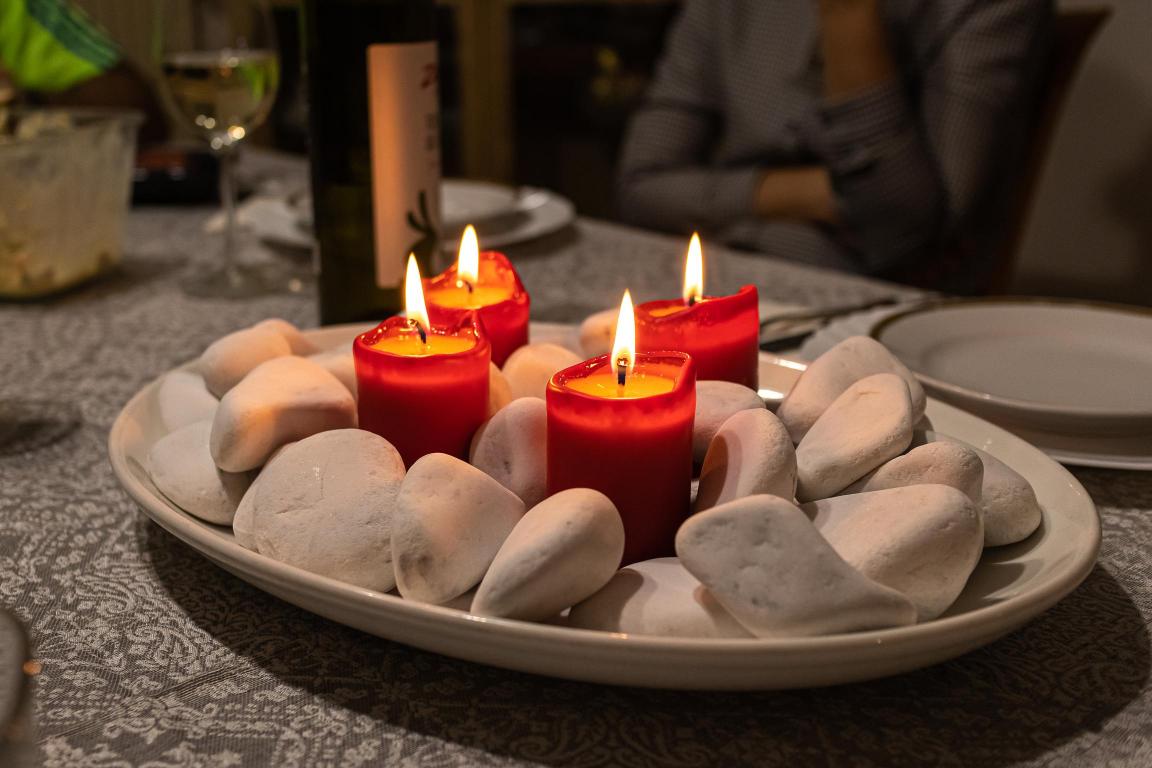
Maintenance and Cleaning
Consider cleaning and maintaining the pebbles frequently from 1 to 6 months once to maintain the uncluttered look. Indoor pebbles do not need as much frequent cleaning as the outdoor pebbles. We suggest certain recommendations to maintain your pebbles both indoors and outdoors.
- Light cleaning: Brush the indoor pebbles every 1 to 3 months to remove the dust and loose debris. Use the same method to clean the outdoor pebbles every 1 to 2 months to remove leaves, twigs and other debris.
- Deep cleaning: Prepare a DIY solution with equal parts of white vinegar and water for a deeper clean. You can add a few drops of mild dish soap for intense deep cleaning. Clean the indoor pebbles with the cleaning solution every 6 to 12 months. For outdoor pebbles, use the deep cleansing every 3 to 6 months with a hose or running tap water. If the pebbles are heavily soiled, soak them in the cleaning solution for a few hours or even overnight. Use a stiff brush to scrub the pebbles, especially if they have stubborn dirt or algae, followed by rinsing. Allow them to dry completely before placing them back in your decor.
- Maintain underwater: You can use a gravel vacuum, which is the primary tool to clean pebbles in aquariums. It is used to clean the debris collected between the pebbles. Consider changing the water from time to time while maintaining the regular cleaning routine.
- Bonus tip: Be gentle when cleaning indoor pebbles, especially if they have a special finish. Consider the type of the pebbles before cleaning them. Some materials may be more porous and require more thorough cleaning. Check your pebbles from time to time for any signs of damage, such as cracks or chips. Remember to wear gloves when cleaning pebbles, especially if you are using any cleaning solutions.
MyTyles Recommended Pebbles
Refresh your living spaces with MyTyles' exquisite range of pebble stones, perfect for adding a natural and stylish touch to your interiors and exteriors. Here are our top recommendations:
- Black Glossy Pebble Stone (Code: PEB-70): These sleek black pebbles with a glossy finish are ideal for creating a modern and sophisticated look in your garden pathways or indoor accents.
- Mix Glossy Pebble Stone (Code: PEB-57): Featuring a harmonious blend of colors, these glossy pebbles bring a vibrant and dynamic feel to any space, making them perfect for decorative bowls or water features.
- White Glossy Pebble Stone (Code: PEB-67): These pristine white pebbles with a glossy sheen offer a clean and minimalist aesthetic, suitable for Zen gardens or as a striking contrast in darker settings.
- Mix Glossy Pebble Stone (Code: PEB-68): This selection offers a diverse mix of pebble colors with a glossy finish, providing versatility for various design applications, from planter toppings to mosaic creations.
- Mix Glossy Pebble Stone (Code: PEB-52): Another delightful assortment of mixed-color pebbles with a glossy surface, these stones are perfect for enhancing the visual appeal of aquariums or terrariums.
Each of these pebble stones is available in 1 kg packs, ensuring you have the right quantity for your project needs. Their durable and water-resistant properties make them suitable for both indoor and outdoor use. Incorporate these pebbles into your design to effortlessly elevate the ambiance of your space.
Final thoughts
When was the last time you creatively decorated your space? Unleash your inner artist to apply innovative ideas for your interior and exterior decoration. Leverage all the ideas and recommendations given in the blog to create an artistically stunning decoration with pebbles.
There are endless design possibilities! These ideas are just to ignite your imagination. You can create more standout decors and thoughtful artistic spaces using the pebbles. It will add personalisation and unique character to your space. Apply your favourite ideas from this blog and share with us how it amplifies your decor.
Meanwhile, MyTyles has stunning collections of pebbles in impressive price ranges. The colours, varieties and finishes are curated for different kinds of needs and decor. You can purchase the pebbles that align with your theme, budget and location. Visit MyTyles to explore more collections of pebbles.
FAQs
Q. What are pebbles used for?
Ans. People use pebbles for landscaping, construction, decoration, and filtering. They also help control erosion and add a natural and organic environment.
Q. What does it mean by Pebble?
Ans. The meaning of pebble refers to a small, smooth, naturally rounded stone, formed from the larger rocks by the action of water and wind over time.
Q. Why are pebbles smooth?
Ans. Pebbles are smooth because they've been repeatedly tumbled by water and wind. This constant abrasion smooths the surface over long periods.
Q. Why do people collect pebbles?
Ans. People collect pebbles for their aesthetic appeal as a sense of connection to nature or simply as a relaxing hobby. Some may also find them fascinating from a geological perspective.
Q. Why are pebbles different colours?
Ans. Pebbles have different colours due to the various minerals they contain. These minerals, present in the original rocks, give each pebble its unique hue, which can be varied by different weather conditions and exposure.
Q. How many pebbles in 1 kg?
Ans. Pebbles vary greatly in size and density. However, approximately, there might be around 200 pebbles in 1 kg, assuming an average pebble weight of 5 grams. The actual number can differ.
Q. How many pebbles cover 1 square foot?
Ans. Small pebbles will cover much more area than large ones. If we assume that the weight of each pebble is 5 gm and the diameter is 1 inch, approximately 72 pebbles would cover 1 square foot. However, you need to know the average size and density of the pebbles to even make the estimate.
Q. How much 1 tonne of pebbles has covered?
Ans. If we assume that the weight of each pebble is 5 gm and the diameter is 1 inch with a 2-inch depth, 1 tonne of these pebbles could cover about 217 square feet. But you need to know the average size and density of the pebbles to even make the actual estimate.
Q. How to calculate pebble quantity?
Ans. Consider the area you want to cover and the desired depth of the pebble layer to calculate pebble quantity. Then, use a volume calculation (area x depth) and consider the bulk density of the pebbles (how tightly they pack) to estimate the weight or number of pebbles needed. You can consult a landscape supplier for expert guidance.
Q. How big is a 20 kg bag of pebbles?
Ans. The size of a 20 kg bag of pebbles varies significantly depending on the size and type of pebbles. Small, dense pebbles will pack more tightly than larger, less dense ones. Expect the bag to be roughly the size of a large sack or bucket, but it's best to check with the supplier for specific dimensions.
